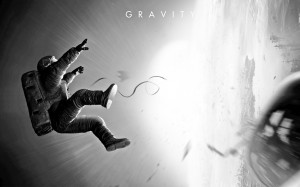The 3-D science fiction film “Gravity” released earlier this month brings to audiences the weightless and visually awe-inspiring experience of astronauts in the uppermost reaches of earth’s gravitational field.

Director: Alfonso Cuaron
Producer: David Heyman and Alfonso Cuaron
Writer: Alfonso and Jonas Cuaron
Starring: Sandra Bullock and George Clooney
Runtime: 91 minutes
The film’s director, Alfonso Cuarón Orozco, is a Mexican film director, screenwriter, producer and editor, best known for his films “A Little Princess,” “Y Tu Mamá También,” “Harry Potter and the Prisoner of Azkaban” and “Children of Men.” The genre of sci-fi wasn’t new to Cuaron, but “Gravity” represents a different direction for him and for sci-fi in general with its space realism lauded as a feat never fully accomplished before this.
The film’s starkly stunning cinematography was balanced with the compelling, though not overstated, drama of the characters. A haunting soundtrack by Steven Price, who worked on “The Lord of the Rings” films and wrote the score for Edgar Wright’s “The World’s End,” manages to capture the vast emptiness and silence of space.
“I was asked to try and tonally represent things that would ordinarily be sound,” Price said in an interview with HuffPost Entertainment. “You don’t hear an explosion in the film, but you might hear some pulsation in the music that reflects it. The score is doing the job of traditional sound.”
The minimalist yet epic score as well as the unnerving absence of sound over exquisite vistas of space cemented this film’s place as a piece of art, as well as a poignant story of courage, survival and the real horror of confronting mortality.
With a highly-digestible running time of only 91 minutes, “Gravity” has received rave reviews with a 97 percent on the film critic site “Rotten Tomatoes” and four out of four stars from Roger Ebert. The $100 million thriller broke box-office records with a gross over $122 million in less than two weeks and a final pull of over $250 million. “Gravity” represented the biggest opening ever for the film’s two stars, according to USA Today.
Dr. Ryan Stone (Sandra Bullock), a medical doctor on her first trip to space, is confronted with an ever-escalating series of catastrophes and finally meets with that most fundamental aspect of the human condition: acceptance of death. Alone in space, the isolation of that experience is magnified intensely.
And the fragility of human life without Earth’s nurturing atmosphere is never more apparent as in the faces of the floating, frozen dead.
As Stone and veteran fellow-astronaut Kowalski (George Clooney) float in the silent inhospitable darkness, with only their space suits and oxygen tanks keeping them alive, I was moved by the wonder of Earth’s existence in the vacuous darkness of the universe. The Earth, in fact, is the most compelling character in the film. Always there, immense and silent in the background, it is a perspective of our life-giving home we don’t often get, especially not in such aurally and emotionally immersive circumstances.
But seeing humans move so convincingly in zero gravity and under such intense duress is probably the most captivating aspect of the movie. Utterly convincing, it is bizarre, eery and wonderful all at once.
Physicist Neil deGrasse Tyson was critical of some details of the film on Twitter, like the film’s title, the presence of a medical doctor to fix a satellite and the direction that deadly space debris moved around the earth, but he later admitted that he enjoyed it nonetheless.
“I would say it was a pretty accurate depiction. It brought back a lot of memories,” said veteran astronaut Michael Massimino in USA Today. “The space shuttle, the views from space and even the tools used were realistic.”
The 3-D aspect, in addition to being more expensive, did not manage to add much that wasn’t already present. In the theater, when it was time to put on my 3-D glasses, I fumbled around balancing them on top of my pre-existing glasses, resentful of the unnecessary annoyance. As the film went on, I forgot that it was in 3-D at all, and not because I was getting accustomed to it, but because this film did not need it.
An incredibly unique and stirring film, its gimmick of another “dimension” was unnecessary.
























